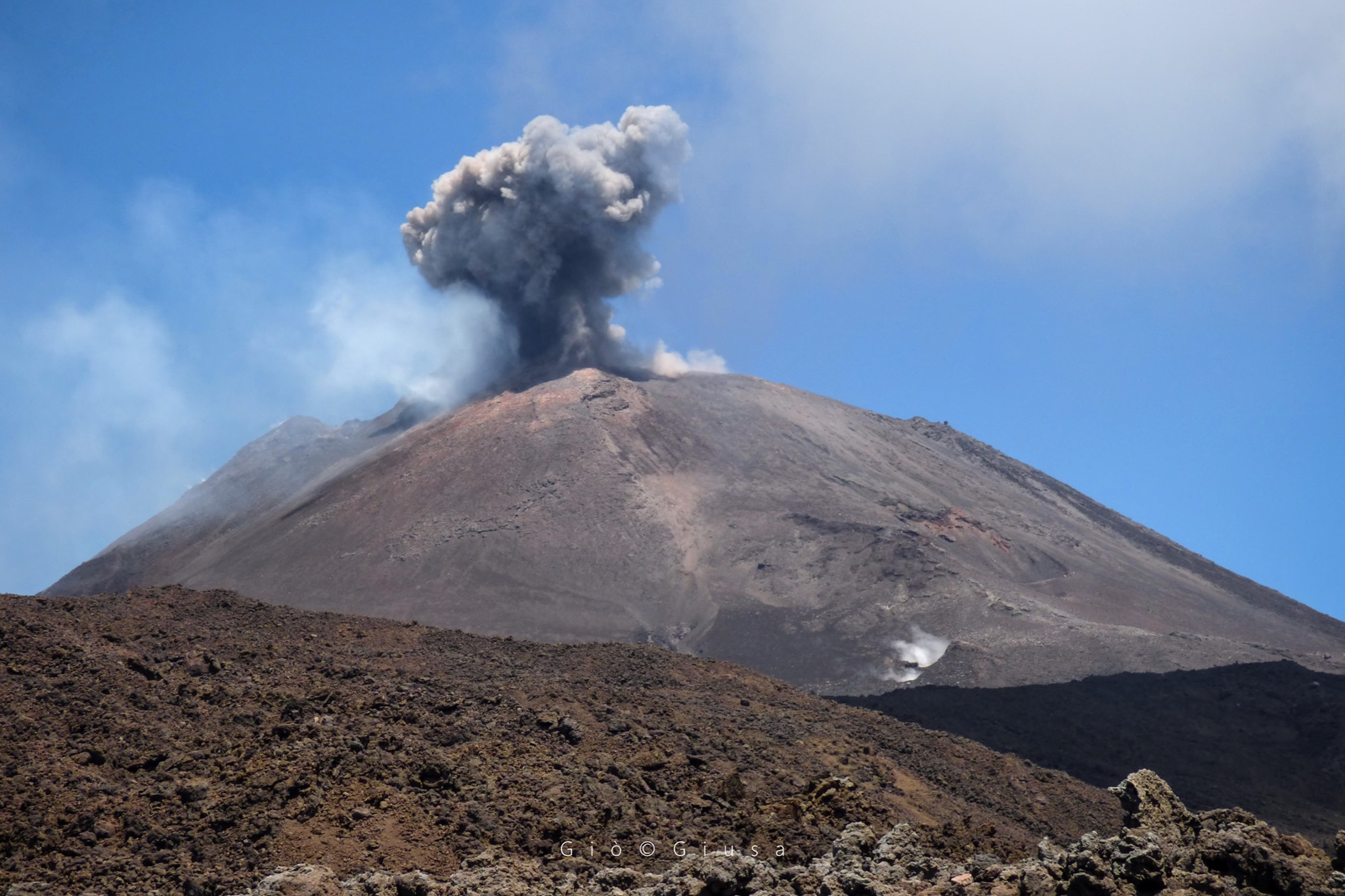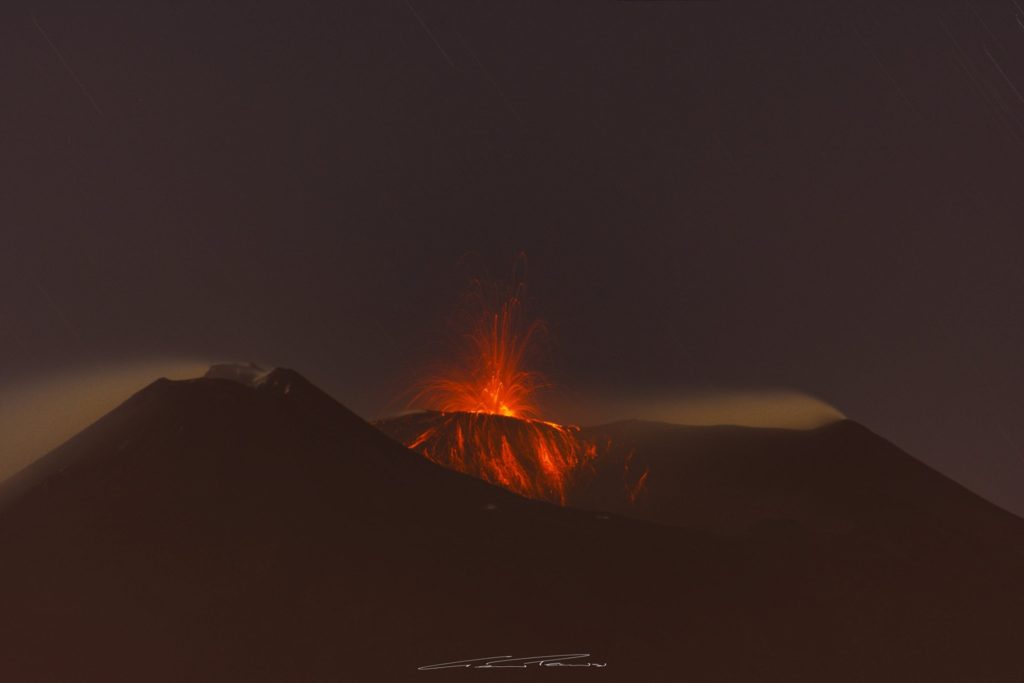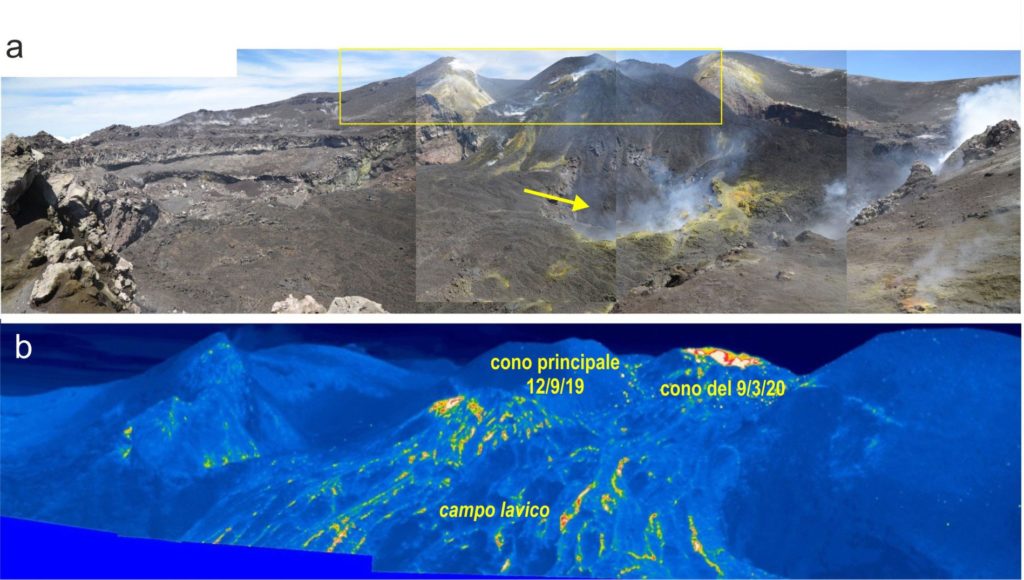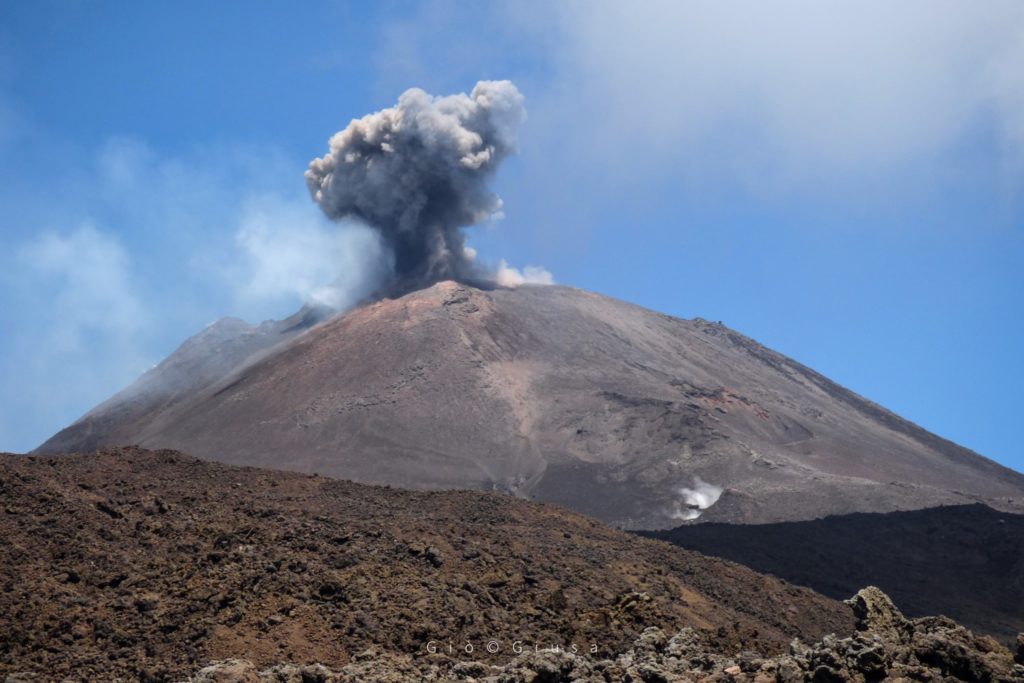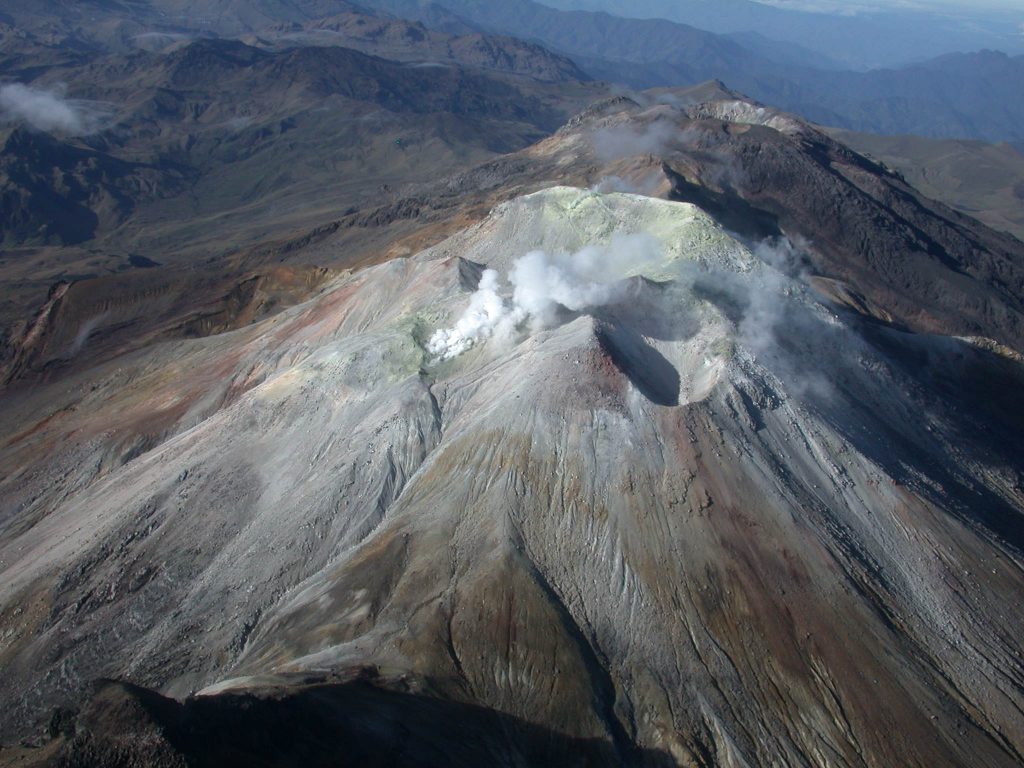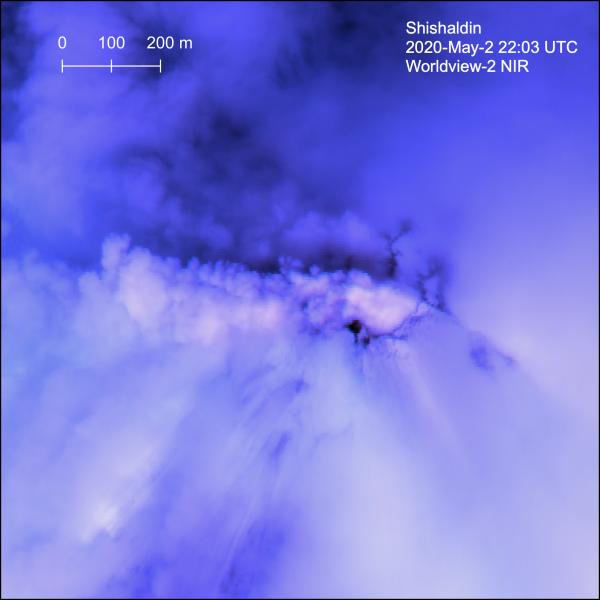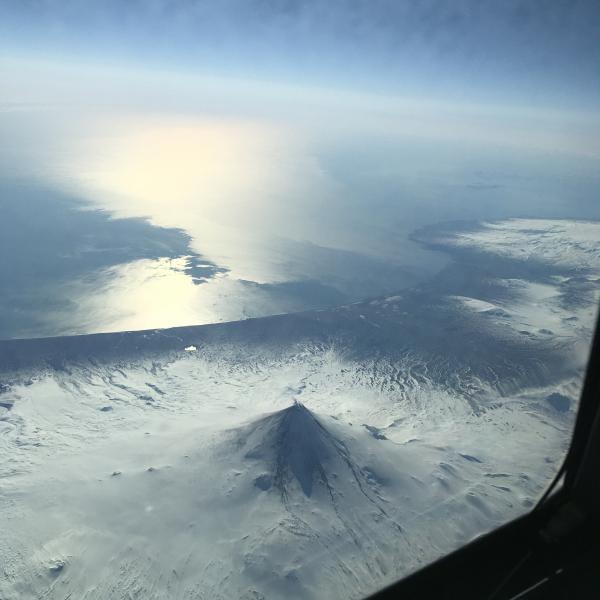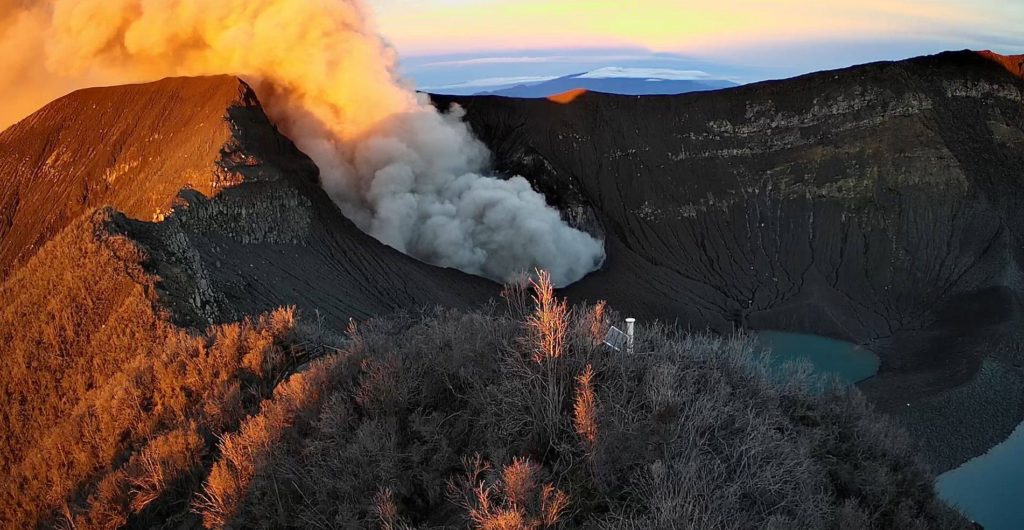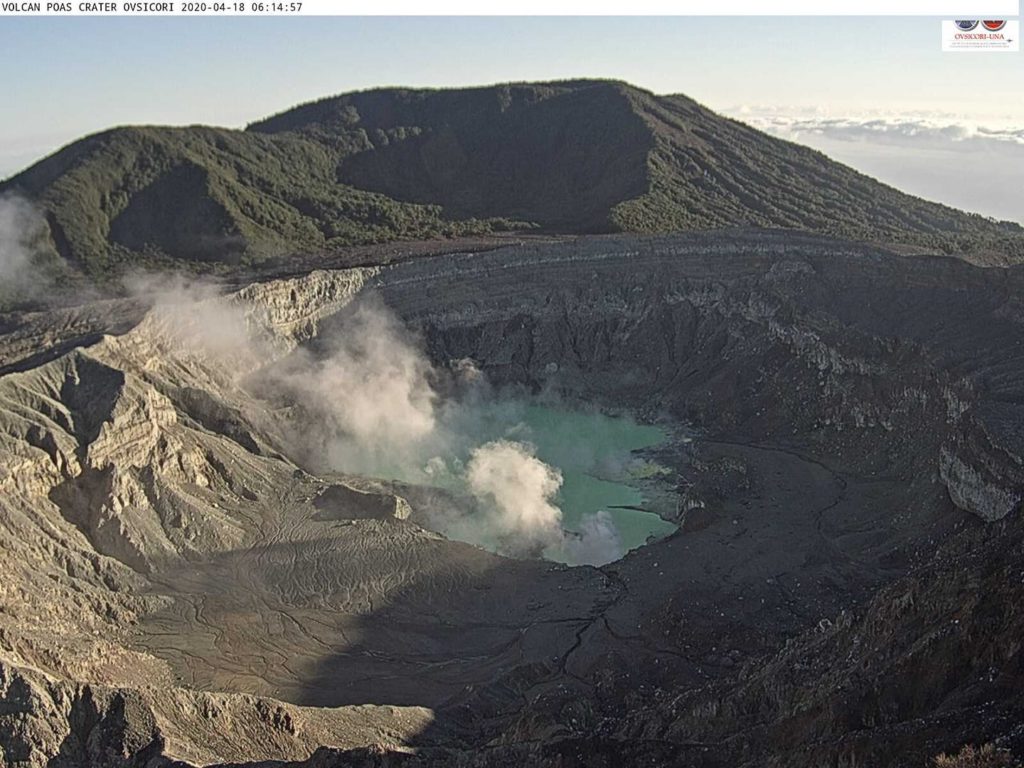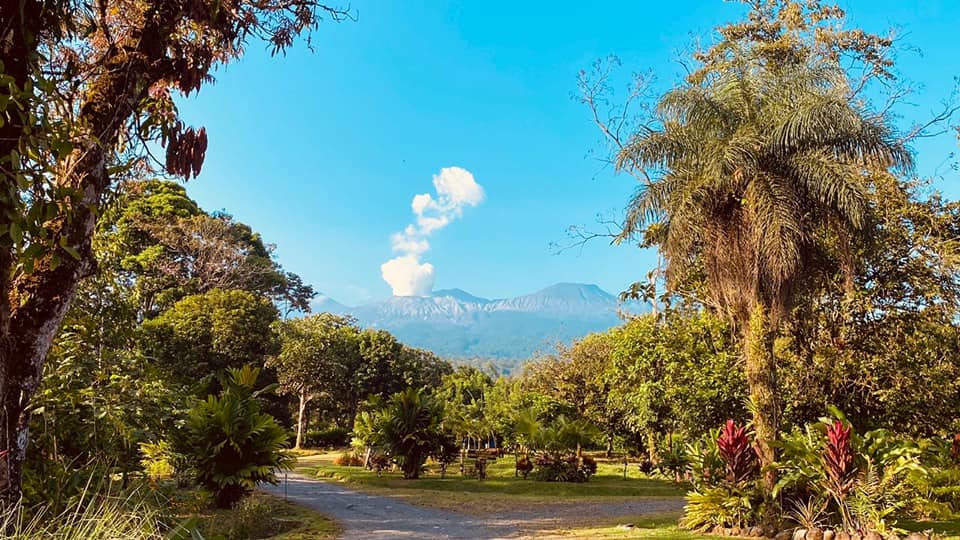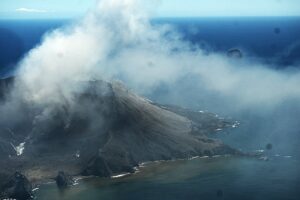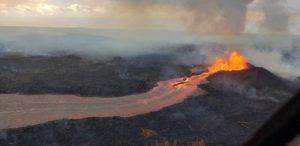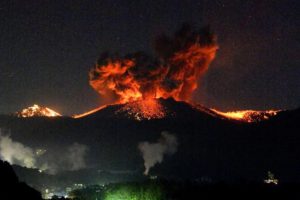May 06 , 2020.
Italy / Sicily , Etna :
Weekly bulletin from April 27, 2020 to May 03, 2020 (issue date 05/05/2020)
SUMMARY OF ACTIVITY STATUS
In light of the monitoring data, it is highlighted:
1) VOLCANOLOGICAL OBSERVATIONS: Strombolian intra-crater activity and end of the effusive activity in the Voragine crater. Strombolian activity with occasional ash emissions from the New Southeast Crater.
2) SEISMOLOGY: Low seismic fracturing activity; stationarity of the volcanic tremor parameters on high values.
3) INFRASOUND: weak infrasound activity.
4) DEFORMATIONS: The Etna soil deformation monitoring networks did not show any significant variation to report last week.
5) GEOCHEMISTRY: the flow of SO2 is at a medium-high level. Soil CO2 flow values are medium-high values. The partial pressure of dissolved CO2 does not show significant variations. The isotopic ratio of helium is fixed at average values (last update of 04/28/2020). No update is available for the C / S report
6) SATELLITE OBSERVATIONS: The thermal activity in the summit area is low.
VOLCANOLOGICAL OBSERVATIONS:
During the week, monitoring of volcanic activity in the summit craters of Etna was carried out by analyzing images from the network of surveillance cameras from the INGV Catania section, Etneo Observatory (INGV-OE) and by through two inspections carried out by INGV-OE staff on April 30 and May 1. Adverse weather conditions limited sightings, especially in the early days of the week.
During the period considered, the upper craters were characterized mainly by explosive strombolian activity and the end of effusive activity in the Voragine crater (VOR); Strombolian activity with occasional ash emissions and degassing at the New Southeast Crater (NSEC). In particular, the observations made during the inspection on April 30 showed that the effusive activity produced by a mouth placed on the east side of the main intra-crater cone, formed on September 12, 2019 ended in the crater of the Voragine. The entire lava field appears on cooling. The end of the lava flow likely occurred during the first days of the week in question.
Overview of the Bocca Nuova and Voragina craters taken during the May 1 inspection from the southern edge of Bocca Nuova. The arrow indicates the depression which widens at the bottom of the crater of Bocca Nuova (photo M. Coltelli). b) thermal image of the area framed in yellow in a), taken during the inspection on April 30. Active flows are no longer present and the entire lava field cools down (images by L. Lodato).
Instead, the strombolian activity of the intra-crater cones of the Voragine crater continues. In particular, during inspections, it was observed that the main cone produced explosions of variable frequency, with emission of gray-black ash and projection of coarse materials several hundred meters high. The explosive activity of the cone formed on March 9, 2020 (Rep. N ° 16/2020) also continued, with occasional reddish ash emissions. On the night of May 3-4, the Strombolian explosions in the Voragina crater appeared particularly energetic and the coarse material produced fell outside the crater edges, settling on the south side of the Bocca Nuova crater . It has also been observed that the depression that has formed inside the crater of Bocca Nuova has further widened compared to what had been observed during the inspection of April 18, 2020 (Rep. N ° 17/2020).
Finally, during the week, a pulsed degassing of the New Southeast Crater continued. The presence of incandescences at night showed that strombolian activity continued in correspondence with the area of the « saddle cone » without however that a hot matter had appeared on the surface. On occasion, this activity was accompanied by the emission of reddish ash which dispersed quickly in the atmosphere.
Volcanic tremor: The temporal trend of the average amplitude of volcanic tremor remained at a high level throughout the week. The location of the tremor source is located below the summit craters, at a depth of about 2800-3000 meters above sea level.
Source : INGV.
Read the whole article : file:///C:/Users/Utilisateur/AppData/Local/Packages/Microsoft.MicrosoftEdge_8wekyb3d8bbwe/TempState/Downloads/BollettinoEtna20200505%20(1).pdf
Photos : Gianni Pennisi ( 04/05/2020 via Sherine France ) , INGV , Gio Giusa .
Colombia , Cumbal :
Cumbal volcanic complex weekly activity bulletin
The activity of the Cumbal volcanic complex continues at the YELLOW LEVEL ■ (III): CHANGES IN THE BEHAVIOR OF VOLCANIC ACTIVITY.
According to the monitoring of the activity of the CUMBAL VOLCANIC COMPLEX, the COLOMBIAN GEOLOGICAL SERVICE (SGC) reports that:
For the period between April 28 and May 4, 2020, in low energy levels, the seismic occurrence recorded a trend similar to that of the immediately preceding period. The predominant seismicity was associated with events related to the fracture of the rock inside the volcanic building, located dispersed near the volcanic complex with shallow depth levels (less than 4 km) and a maximum local magnitude of 0.4 on the Richter scale.
Favorable atmospheric conditions made it possible to highlight gas emissions coming mainly from El Verde (northeast of the volcanic complex), as well as other fields of fumaroles such as Rastrojos, Boca Vieja and Las Bandas, on the Mundo Nuevo volcanic building (southwest of the volcanic complex). The emission columns were observed in white, and of variable height and direction due to the action of the winds. The other volcanic monitoring parameters did not show significant variations.
Source : SGC.
Photo : Ingemmet.
Alaska , Shishaldin :
54°45’19 » N 163°58’16 » W,
Summit Elevation 9373 ft (2857 m)
Current Volcano Alert Level: ADVISORY
Current Aviation Color Code: YELLOW
Steam plume at Shishaldin visible in false color near-IR Worldview-2 satellite image. May 02 , 2020 .
Unrest continues at Shishaldin with a wispy steam plume visible in webcam images. Occasional periods of tremor and low frequency earthquakes were detected on the local seismic network, but no explosive activity was detected on regional infrasound sensors. Satellite imagery showed a thin ash deposit extending a short distance southeast from the summit.
Oblique aerial photo of Shishaldin Volcano taken on March 11, 2020 on and Alaska Airlines flight from Adak to Anchorage, Alaska. Minor steaming from the summit crater is seen. Erosion of the snow and ice on the upper flanks or the volcano can be seen and is the result of lava flows from eruptive activity in late 2019 to early 2020.
Retrospective analysis suggests this has been present since April 29 and corresponds to an increase in the diameter and depth of the vent within the summit crater, suggesting a small collapse occurred approximately one week ago. Although unrest is currently at low levels, activity could escalate with little warning, and additional eruptive activity within the summit crater, lava flows, lahars, and ash-producing eruptive events could occur.
Shishaldin is monitored by local seismic and infrasound sensors, satellite data, web cameras, a telemetered geodetic network, and distant infrasound and lightning networks.
Source : AVO.
Photos : Loewen, Matt , Schneider, Dave ( 11 Mars 2020. ).
Costa Rica , Turrialba / Poas / Rincon de la Vieja :
Weekly bulletin from the volcanic monitoring program, May 4, 2020.
Turrialba volcano:
Lat: 10.025 ° N; Long: 83,767 ° W;
Height: 3340 m above sea level
Current activity level: 2 (active volcano)
Potentially associated hazards: gas, ash emission, proximal ballistic projections.
No ash emission was detected. Seismicity remains stable with 40 to 60 daily events of low frequency. Since May 2, low amplitude surface proximal type events have been recorded under the crater, as well as LP type events and harmonic tremors. The building contraction trend continues. The CO 2 / SO 2 and H 2 S / SO 2 ratios have continued to increase since mid-March. The flow of SO 2 remains stable. The seismic activity of the last weekend could be associated with a pressurization of the hydrothermal system.
Poás Volcano:
Lat: 10.2 ° N; Long: 84 233 ° W;
Height: 2780 m above sea level
Current activity level: 2 (active volcano)
Potentially associated hazards: gas, groundwater eruptions, proximal ballistic projections.
No éruption was detected. Seismic activity has stabilized around 200 to 300 daily events. Deformation monitoring shows a slight extension. The SO 2 / CO 2 ratio has a downward trend, the H 2 S / SO 2 ratio remains stable. The flow of SO 2 is stable. A few peaks (<7 ppm) have been recorded in SO 2 concentrations at the national park viewpoint. The level of the lake seems stable or decreases slowly.
Rincon de la Vieja volcano:
Lat: 10.83 ° N; Long: 85.324 ° W;
Height: 1895 m above sea level
Current activity level: 3 (erupting volcano)
Potentially associated hazards: gas, phreatic eruptions, proximal ballistic projections, lahars.
The activity of the volcano remained high with frequent eruptions of small amplitude until May 2. The eruptions were not large enough to generate lahars. The tremor has remained alternating between continuous and fragmented. This activity has been stable since April 20. Geodetic measurements confirm the building’s tendency to contract.
Activity report of the Rincón de la Vieja volcano, 05 May 2020.
On May 05, 2020 at 1:17 pm local time, an eruption was recorded on the Rincón de la Vieja volcano, with a column that rose 200 meters above the height of the crater and 2116 meters above it from sea level. (6,940.48 ft).
Duration of activity: 1 minute.
Comments: The sediment and water column of the crater lake rose up to 200 meters above the crater. The materials of the eruption fell back into the crater, so the lahars are not expected. The column of water vapor and gas rose above 500 meters.
Source : Ovsicori .
Photos : RSN , Theresa Lopez , Maurice Gutiérrez de Blue River Resort de Buenos Aires de Upala.

